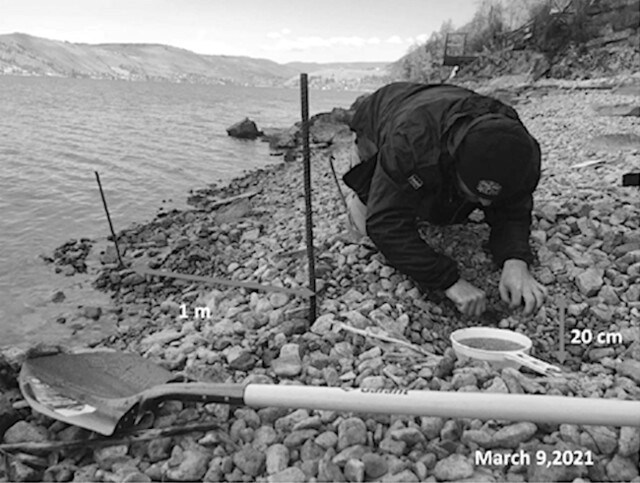Efforts to restore kokanee populations in Okanagan Lake have taken a hit from this summer's low lake level.
The BC Wildlife Federation says the province appears to have mistimed the spring drawdown of the lake, undermining a 28-year effort to recover kokanee populations.
The federation says work had just begun to pay off, with 316,000 shore-spawning fish returning in 2020, the highest rate since the 1970s and 214% of the 10-year average.
With snowpacks above normal in February, the province began to lower the lake at the control dam in Penticton in anticipation of a substantial spring freshet and possible flooding.
But, by early March, documents released under the Freedom of Information Act government show biologists and First Nations became concerned that the annual drawdown was prematurely exposing shoreline spawning areas, stranding unhatched kokanee eggs and immature fry.
The Okanagan Nation Alliance warned that the predicted final emergence date for kokanee fry was "too early."
Sampling in the field showed kokanee fry were not as mature as anticipated, they could not swim freely and "therefore significant numbers would be stranded by further lake level drops."
An excavation of shoreline gravel led by a government biologist found mainly dead eggs in the 25-cm vertical drawdown zone. “The majority of kokanee observed were still in egg stage and deceased,” the report concluded.
A report notes that 75% of the kokanee eggs and fry in the survey area were dead. The report speculates that the late winter drawdown of Okanagan Lake had a direct impact on kokanee shore spawning egg development and survival, adding "the scale of the impact is unclear."
"Since the Okanagan Lake kokanee population crash of the mid-1990s, First Nations, local conservation groups, and regional fisheries staff have spent millions of dollars and countless volunteer hours in a concerted effort to rebuild these important fish. By drying these eggs up, we may have just set ourselves back decades," says Patrick Whittingham, Okanagan Region president for the BC Wildlife Federation.
The federation says the science behind lake level decisions "clearly isn’t working with our changing climate."
"The problem is that the government’s inflow water modelling tools are not able to keep up with the effects of climate change on runoff and the lake itself," says Jesse Zeman, director of the federation's fish and wildlife restoration program.
The Penticton dam can lower the lake’s level by about 1 3/4 cm per day, but with climate change spring runoff can raise the lake’s level as many as 7-8 cm, the federation says.
It suggests the lake be drawn down before October, so that spawners lay their eggs further down the shoreline.
"B.C. needs a watershed security fund and strategy to deal with the earlier and more intense spring runoff followed by the dry summers we’re currently experiencing," says Zeman.
He says, in the long term, homes will need to be built farther from the lake and stream edges "so that these unprecedented runoff and drought cycles do not continue to flood people’s property.
"That sounds like a radical solution, I know, but the climate is changing and we have to adapt to a new reality."




